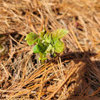melons and fungicide
daninthedirt (USDA 9a, HZ9, CentTX, Sunset z30, Cfa)
3 years ago
last modified: 3 years ago
Featured Answer
Sort by:Oldest
Comments (21)
wayne_5 zone 6a Central Indiana
3 years agolast modified: 3 years agodaninthedirt (USDA 9a, HZ9, CentTX, Sunset z30, Cfa)
3 years agolast modified: 3 years agoRelated Professionals
Londonderry Landscape Architects & Landscape Designers · Simpsonville Landscape Architects & Landscape Designers · Marco Island Landscape Architects & Landscape Designers · Apollo Beach Landscape Contractors · Belmont Landscape Contractors · Bound Brook Landscape Contractors · Hilton Head Island Landscape Contractors · Middletown Landscape Contractors · Old Saybrook Landscape Contractors · Peoria Landscape Contractors · Suitland Landscape Contractors · Reisterstown Landscape Contractors · Fallbrook Driveway Installation & Maintenance · New River Driveway Installation & Maintenance · Sunnyvale Driveway Installation & Maintenancewayne_5 zone 6a Central Indiana
3 years agomxk3 z5b_MI
3 years agodaninthedirt (USDA 9a, HZ9, CentTX, Sunset z30, Cfa)
3 years agolast modified: 3 years agodaninthedirt (USDA 9a, HZ9, CentTX, Sunset z30, Cfa)
3 years agolast modified: 3 years agowayne_5 zone 6a Central Indiana
3 years agodaninthedirt (USDA 9a, HZ9, CentTX, Sunset z30, Cfa)
3 years agolast modified: 3 years agovgkg Z-7 Va
3 years agomxk3 z5b_MI
3 years agodaninthedirt (USDA 9a, HZ9, CentTX, Sunset z30, Cfa)
3 years agolast modified: 3 years agotheforgottenone1013 (SE MI zone 5b/6a)
3 years agowayne_5 zone 6a Central Indiana
3 years agomxk3 z5b_MI
3 years agowayne_5 zone 6a Central Indiana
3 years agomxk3 z5b_MI
3 years agodaninthedirt (USDA 9a, HZ9, CentTX, Sunset z30, Cfa)
3 years agolast modified: 3 years ago
Related Stories

FARM YOUR YARDHow to Grow Vegetables in Containers
Get glorious vegetables and fruits on your patio with a pro’s guidance — including his personal recipe for potting mix
Full StoryMore Discussions







daninthedirt (USDA 9a, HZ9, CentTX, Sunset z30, Cfa)Original Author